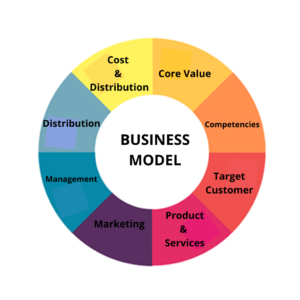How to become your own stock analyst

If you are an investor who likes to be independent, you should consider becoming your stock analyst. With a big question mark hanging over some analysts over their credibility, it’s always best to learn the ropes on your own. Read on to find out how you too can think like an analyst, even sitting at home.
HIGHLIGHTS
Wall Street often relies on analyst estimates based on corporate financial data to recommend stocks and determine target prices.
Individual investors can also use the same type of fundamental analysis to identify potentially undervalued stocks and set price targets.
Here we look at some of the basics of stock market research and start with your analysis.
Whether you’re an investor looking for growth or value, the first step to thinking like an analyst is to develop an inquisitive mind. You need to know what to buy or what to sell at what price. Analysts usually focus on a particular industry or sector. Within that particular industry, they focus on select companies. An analyst’s goal is to thoroughly probe the business of the companies on their list. To do this, they analyse the financial statements and any other information available about the company. To verify facts, analysts also probe the affairs of a company’s suppliers, customers, and competitors. Some analysts also visit the company and interact with its management to gain a first-hand understanding of how the company operates. Gradually, professional analysts are connecting all the dots to get the full picture.
Before making any investment, you should do your research. It’s always best to research multiple stocks in the same industry to get a comparative analysis. Access to information is usually not a problem. With more experience and time, you can think of putting more actions under your goal.
Stock Analysis is a Process
It's best to start where you are
Reviewing analyst reports is the best way to start your analysis. In this way, you save a lot of time by reducing the short preliminary work. You don’t have to blindly follow analysts’ buy or sell advice, but you can read their research reports to get a quick overview of the company, including its strengths and weaknesses, key competitors, industry outlook and prospects. Analyst reports are rich in information, and reading the reports of several analysts at the same time would help identify the common thread. Opinions may differ, but the basic facts in all relationships are common.
In addition, you can take a closer look at the earnings forecasts of the various analysts, which ultimately determine their buy or sell recommendations. Different analysts may set different target prices for the same security. Always look for reasons when reading analyst reports. What would have been your opinion on the current title with the same information? A clue? Then go to the next step.
What to Analyse
To come to a reliable conclusion about a stock, you need to understand the different steps involved in stock analysis. Some analysts follow a grouping strategy, starting with industry, and then locating a winning company, while others follow a fundamental approach, from a particular company, and then learn the outlook for the sector.


Sector Analysis
There are publicly available sources of information for almost every sector. Often, a company’s annual report itself provides a pretty good overview of the industry, as well as its prospects for future growth. Annual reports also tell us about major and minor competitors in a given industry. Reading the annual reports of two or three companies at the same time should provide a clearer picture. You can also subscribe to trade magazines and websites targeting a particular industry to keep up with the latest industry happenings.
Business Model Analysis
You need to focus on the strengths and weaknesses of a business. There can be a strong company in a weak sector and a weak company in a strong sector. A company’s strengths are often reflected in aspects such as brand identity, unique products, customers and suppliers. You can learn about the activities of a model company from its annual report, specialized magazines and websites.


Financial Strength
Whether you like it or not, understanding a company’s financial strength is the most crucial step in stock analysis. Without understanding financial data, you can’t think like an analyst. You must be able to understand the balance of a company’s balance sheet, income statement and cash flow statement. Often the numbers in financial statements speak louder than the shiny words of an annual report. If you are not comfortable with numbers and want to analyze stocks, there is no time to start learning and getting used to them.
Quality of management
The quality of management is also essential for an equity analyst. It is often said that there are no good or bad companies, only good or bad managers. Top managers are responsible for the future of the company. You can assess the management of the company and the quality of the advice by researching on the Internet. There is a plethora of information about each public company.


Growth Analysis
Stock prices follow earnings, so to know whether a stock price will rise or fall in the future, you need to know where future earnings are heading. Unfortunately, there is no quick formula that can tell you what to expect for future income. Analysts make their estimates by analyzing past data on sales growth and profit margins, as well as profitability trends in that particular industry. Essentially, it’s about connecting what happened in the past with what is supposed to happen in the future. Making sufficiently accurate profit forecasts is the ultimate test of your stock analysis skills, as it is a good indication of your understanding of these industries and companies.
Valuations
Once you understand future profits, the next step is to know the value of a business. What should your company’s shares be worth? Analysts need to find out how justified the current market price of the stock is regarding the value of the company. There is no “correct value” and different analysts use different parameters. Value investors are interested in intrinsic value, while growth investors are interested in potential gain. A company that sells at a higher P/E ratio must grow at a higher price to justify its current price to growing investors.


Target Price
The final step is to set a target price. Once you understand the different ways to predict future earnings, you can calculate a high and low target price by multiplying the estimated earnings per share (EPS) by the P/E ratio. The high and low target price is the range price range in which the future price of the stock is likely to move in response to expected future earnings. Once you know the target price, you can use it perfectly to reach your destination.
Conclusion
The ultimate goal of every investor is to make a profit, however, not all investors or analysts are good at it. Never blindly accept what stock analysts have to say and always do your research. Not everyone may be an investment expert, but you can always improve your analytical skills when it comes to stocks.





